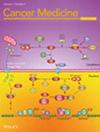Genetic Characteristics of Cutaneous, Acral, and Mucosal Melanoma in Japan
Abstract
Background
Acral and mucosal melanomas are more prevalent in Asians than in Caucasians, unlike cutaneous melanomas, which are predominant in Caucasians. Recent studies have suggested that non-Caucasian cutaneous melanomas responded less to immune checkpoint inhibitors, highlighting the need for genetic profiling across ethnicities. This study aimed to elucidate the genetic characteristics of Japanese melanomas, which is an under-researched topic.
Methods
Single-nucleotide variants, indels, and copy number alterations in 104 Japanese melanoma patients (37 cutaneous, 52 acral, and 15 mucosal) were analyzed using custom panel sequencing.
Results
Driver events were detected in 94% of the cases. Among cutaneous melanoma cases, 76% had BRAF mutations, and 8% had NRAS mutations. In acral melanoma, BRAF (9%), NRAS (17%), KRAS (8%), KIT (19%), and NF1 (7%) mutations were detected. Major driver mutations in mucosal melanoma were detected in NRAS, KRAS, NF1, PTEN, GNAQ, and KIT. The median tumor mutational burden across all melanoma types was 4.6 mutations/Mb, with no significant difference between the cutaneous and acral/mucosal types. Of the 21 patients with both primary and metastatic lesions, 11 showed distinct mutations in each. Potentially actionable mutations were detected in 58 patients in addition to BRAF V600E/K mutations in 31.
Conclusions
This study highlights distinct genetic abnormalities and actionable alterations in Japanese melanoma patients. This suggests a lower tumor mutational burden in East Asian cutaneous melanoma, which may affect the efficacy of immune checkpoint inhibitors. The heterogeneity of driver mutations across and within individuals highlights the need for personalized treatment approaches.


 求助内容:
求助内容: 应助结果提醒方式:
应助结果提醒方式:


